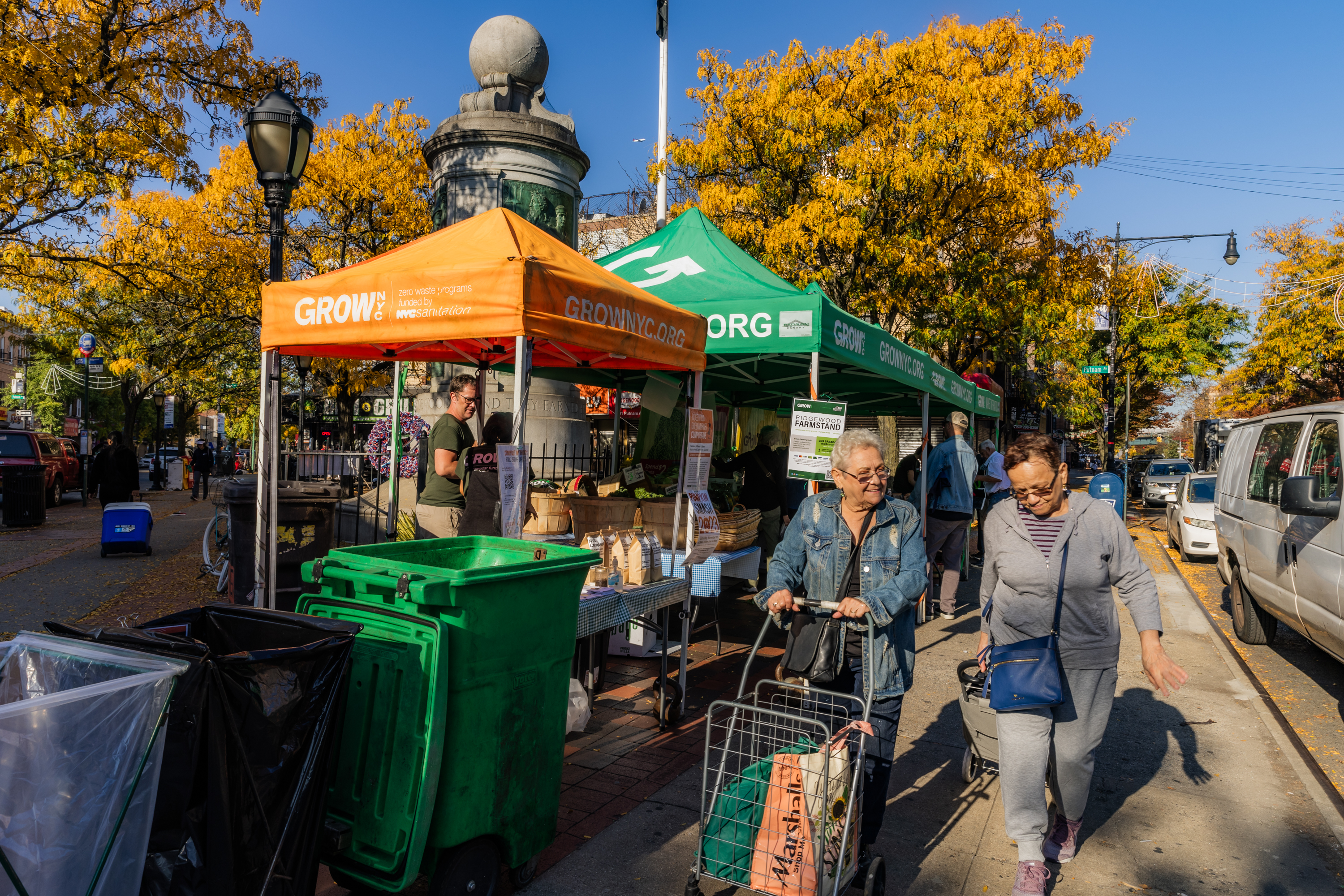Zero Waste at your school has the immediate benefits of a cleaner cafeteria and a more orderly sidewalk collection area. These small contributions in schools add up to a bigger change globally: helping reduce greenhouse gas emissions by reducing the amount of waste going to landfills. Read more about the many benefits of sending less waste to landfills in each catagory below.
Landfills
- New York City officially closed its last landfill, Fresh Kills, in 2001. Now we send all of our trash to landfills in other states including Pennsylvania, Ohio, and South Carolina. Some materials that end up in landfills contain toxic substances which can leach into the soil and groundwater, causing environmental hazards that last decades or longer.
- An estimated 70% of materials sent to landfills in the United States are recoverable, meaning they can be recycled. For instance, New Yorkers send 400,000 tons of recyclable paper to landfills every year.
Climate Change
- Landfills are a major contributor to climate change. The breakdown of organic materials in landfills releases methane (CH4), a greenhouse gas with a Global Warming Potential of up to 72 times that of carbon dioxide (CO2).
-
By sending less waste to landfills in combination with diverting organic materials to composting facilities, there could be a significant reduction in greenhouse gas emissions.
Natural Resources
-
Extracting virgin natural resources to use as raw material for products uses more energy than recycling. Reducing consumption of new products reduces the need to search for and extract more raw materials, such as petroleum for plastic products and ore for aluminum and steel. Reuse and recycling keeps these resources in use as long as possible.
-
Discovery of raw material resources becomes more difficult over time; nonrenewable resources are more expensive to extract more deeply... in both environmental and economic terms.
Environmental Justice
-
Due to factors like NIMBY-ism (“not in my backyard”), hazardous waste sites, municipal landfills, incinerators, and other hazardous facilities are disproportionately located in poor and minority neighborhoods. These communities are usually inadequately equipped to successfully oppose the placement of such sites without equal access to resources and legal power. Environmental justice groups often fight for years to shut down these plants and facilities, sometimes long after the health of community members has been compromised.
-
NYC specific example: transfer stations
Economics
-
New York City spends over $300 million a year to export our landfill waste to other states.
-
A circular recycling-based economy preserves the value-added in products. Once a product has reached the end of its life the recycled components remain in productive use, thus creating further value.
-
Green jobs are growing at twice the rate of all other jobs.
NYC Laws & Regulations
-
Local Law 19 (LL19) of 1989 - Established New York City’s mandatory recycling program requirements for residents, businesses, and institutions.
-
Local Law 77 (LL77) of 2013 - Required New York City Department of Sanitation (DSNY) to implement a voluntary residential organic waste curbside collection pilot program and a school organic waste collection pilot program.




